Home » Posts tagged 'carbon emissions' (Page 7)
Tag Archives: carbon emissions
Global Warming and Cooling After CO2 Shutoff at +1.5°C
Global Warming and Cooling After CO2 Shutoff at +1.5°C
I have done further analytical modeling of global warming, using the same general method described earlier.
The question addressed now is: what is the trend of temperature change after an abrupt shutoff of all CO2 emissions just as the net temperature rise (relative to year 1910) reaches +1.5°C, given the lifetime of CO2 in the atmosphere?
For this problem, it is assumed that when the temperature rise (relative to 1910) reaches ~+1.5°C, that:
– all greenhouse gas emissions cease;
– pollution grit (which scatters light) falls out of the atmosphere “instantly” (a few weeks);
– CO2 (greenhouse gas) concentration decays exponentially after emissions shutoff;
– for CO2 lifetimes [e^-1] in years: 20, 50, 100, 238.436, 500, 1,000, 10,000, 100,000;
– temperature sensitivities of cloud cover, ice cover and albedo are as in the previous model;
– all other fixed physical parameters are as in the previous model,
(https://manuelgarciajr.com/2020/06/13/living-with-global-warming/).
In general, for the 8 cases calculated, the temperature increases at a diminishing rate after the emissions shutoff, reaches a peak, then trends downward.
The longer the lifetime of carbon dioxide in the atmosphere, the later and higher is the temperature peak, and the longer it takes to cool back down to the baseline temperature of 1910, which is 1.5°C below the starting temperature for this problem.
The 4 figures below show the calculated results.
Figure 1: °C change vs. years after shutoff, for lifetimes: 20, 50, 100, 238.436 years.
Figure 2: °C change vs. years after shutoff, for lifetimes: 20, 50, 100, 238.436, 500, 1,000 years.
Figure 3: °C change vs. years after shutoff, for lifetimes: 238.436, 500, 1,000, 10,000 years.
Figure 4: °C change vs. years after shutoff, for lifetimes: 1,000, 10,000, 100,000 years.
It is evident from the figures that if the lifetime of carbon dioxide in the atmosphere is greater than 500 years, that a temperature overshoot above +2.0°C (relative to 1910) will occur before cooling begins.
…click on the above link to read the rest of the article…
What’s Next For Big Oil?
What’s Next For Big Oil?
- The global COVID-19 pandemic has had a significant role to play in Big Oil’s shift towards cleaner energy.
- Three of the world’s biggest oil and gas companies are planning to become net-zero carbon emitters by 2050.
- Tech will not only help Big Oil become more efficient–it may turn out to be instrumental for their net-zero ambitions.
Something unthinkable is happening in Big Oil, and it’s not the demand slump or the spending cuts or the layoffs. With the exception of the demand slump, we’ve seen all this before–more than once, in fact. No, what’s unthinkable is that Big Oil appears to be planning to stop being Big Oil.
It’s not a joke. Three of the world’s biggest oil and gas companies are planning to become net-zero carbon emitters by 2050. And, as Energy Intelligence noted recently in an industry analysis, there are only two ways to attain the net-zero state: reduce the production of oil and gas, and capture the already emitted carbon dioxide.
The three top performers in the field seem to be focusing on the first way. Shell, BP, and Total—along with Italy’s Eni and Spain’s Repsol—all plan to boost their output of renewable energy at the expense of oil significantly over the next few decades. And the U.S. supermajors, as reluctant as they have been to join the green wave in energy, might at some point simply be forced to do it by their shareholders and by the new, post-coronavirus world order.
It would be an understatement to say that the pandemic had some role to play in the transformation looming over the energy industry as we know it. The pandemic, and the oil demand slump it brought on the industry, had a significant role to play in that transformation. The extent and speed of this demand slump were literally unprecedented, but now that the precedent has been set, Big Oil is preparing for the future.
…click on the above link to read the rest of the article…
Why Cleantech Investment Should be a High Priority Now and after COVID-19
Why Cleantech Investment Should be a High Priority Now and after COVID-19
Prior to the COVID crisis, progression to Net Zero carbon neutral emissions was rising to the top of the policy agenda in many countries. Understandably, the global health and economic crisis has thrown a spanner into the works. It is crucial though, Robyn Owen and Theresia Harrer write, that in our attempts to recover, we tie in the fundamental need for a better funded systematic government-led Green Deal approach to early stage Cleantech funding.

The COVID-19 crisis threatens all of our lives. Understandably, it is currently the central focus of government policy globally. Yet history tells us that post-crisis economic reconstruction is most successful where investment is greatest in new emerging sectors. It is crucial, therefore, that investment in the UK is directed towards globally leading innovations for environmentally sustainable development, rather than simply to become more efficient at producing and selling more of the same.
Prior to the COVID crisis, progression to Net Zero carbon neutral emissions was rising to the top of the policy agenda in many countries. There was a widespread declaration of the climate crisis and climate war and a proliferation of Green New Deals—overarching policies for integrated government-led approaches to delivering reduction in carbon use and emissions.
We have argued that an essential element of climate change policies is a recognition that investing in early stage SME Cleantech innovators is crucial. These are companies developing technologies that lower carbon use and which are key to reaching the ambitious goals of an at least 40% reduction in greenhouse gas emissions set by the UNFCCC Paris Agreement of 2015. However, the costs and risks of investments in the cleantech sectors such as renewable energy, transport, building and communications infrastructure are high.
…click on the above link to read the rest of the article…
The Recent History of GDP Growth, CO2 Emissions, and Climate Policy Paralysis, All in One Table-Runner
The Recent History of GDP Growth, CO2 Emissions, and Climate Policy Paralysis, All in One Table-Runner

Note: I began designing this table-runner just before the COVID-19 pandemic blew up in the United States. In the time I have been embroidering it, rates of death and misery have soared while wealth generation and carbon emissions (the two subjects of this work) have ended their decades-long rise and have plummeted. A deadly virus is a terrible means of slowing greenhouse warming. Whenever we come out the other side of the pandemic, we must pursue a rapid, humane, ecologically sound, and guaranteed-effective course of action to drive greenhouse emissions down to zero. Here’s how. — P.G.C.

The color of money is the color of calamity
This table-runner illustrates, from left to right, the increase in atmospheric carbon dioxide concentration from 1946 to the present. Each year is represented by two adjacent stripes: one in gradually deepening shades of green representing that year’s U.S. gross domestic product (adjusted for inflation) and one in increasingly intense shades of yellow-orange-red, representing CO2 concentration.
There are nine shades for GDP and eleven for CO2, with shades indicating roughly equal intervals of increase in each. The shades of both types of stripes darken as the years go by, in accordance with the increases that occurred in both GDP and CO2. (For hi-res, zoomed-in images of the table-runner, see here.)
The shades of yellow-orange-red in the table-runner darken more and more rapidly as the years pass, illustrating how emissions of CO2 accelerated as industrial output and fossil-fuel use rose more rapidly throughout the world. The concentration of CO2 rose at an annual rate of about 0.8 ppm from 1945 to 1980; 1.5 ppm from 1980 to 1995; and 2.1 ppm from 1995 to 2019. (The United States accounted for almost 20 percent of the rise in atmospheric CO2 during those years.)
…click on the above link to read the rest of the article…
Sprawling Our Way to Climate Catastrophe
Sprawling Our Way to Climate Catastrophe
The best way developers can help cut emissions is by redesigning suburbia. Make them to do it.
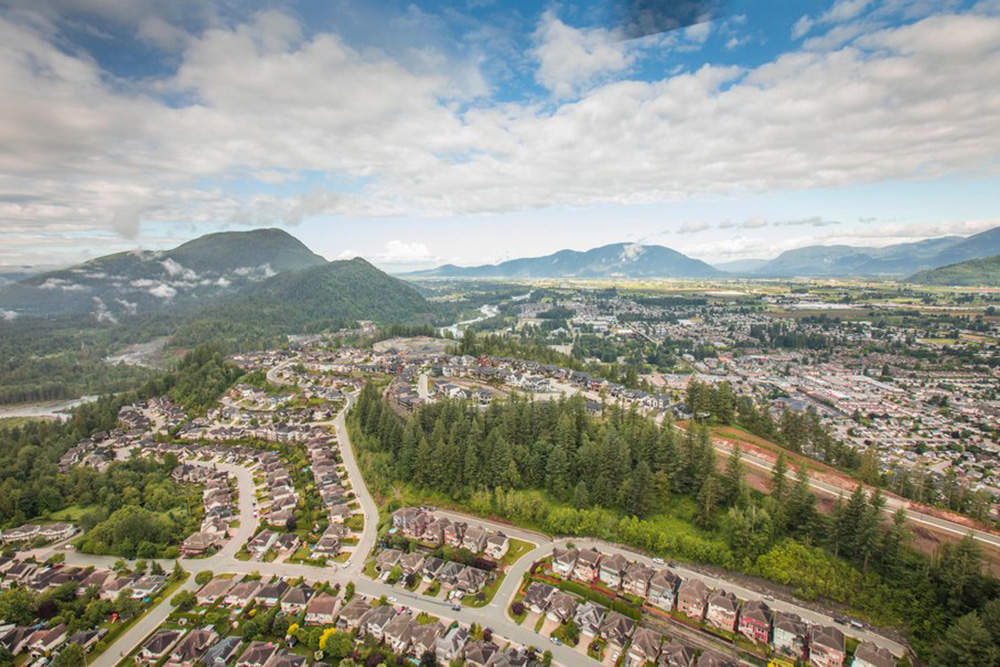
There’s a hole in B.C.’s climate plan big enough to drive a subdivision through.
While civil servants in Victoria diligently seek emissions reductions throughout the province to hit our climate targets, the people working in B.C.’s municipal governments routinely approve more suburban sprawl, meaning more drivers in private vehicles pushing emissions up.
More frustrating is that local governments are ultimately creatures of the provincial government. This means the B.C. government is essentially working against itself.
The CleanBC plan includes all kinds of policies, from efficient buildings to promoting electric vehicles to workforce training. But it’s strangely silent on the number one municipal climate issue: suburban sprawl.
Transportation accounts for the most emissions at the city level, and those emissions are driven by development patterns. If municipalities approve dense development close to services, people can walk, bike or be well served by transit. If they approve spread-out subdivisions far from services, people have no choice but to get in their vehicles every time they leave the house.
And no, electric vehicles will not save us from bad development decisions. While a growing minority of people are indeed going electric, they still account for less than four per cent of new car sales in Canada. Meanwhile, many buyers are increasingly shifting to gas-guzzling trucks and SUVs, making Canada’s fleet the least efficient in the world.
This is a policy failure in itself, but also a reminder that there is no one fix to climate change. We need to do it all, and local governments must play their part.
…click on the above link to read the rest of the article…
Fertilizing a Garden Entirely for Free
Fertilizing a Garden Entirely for Free
At our house we have a goal to produce 80% of our fruit, veggies, meat and dairy within five years of moving onto our land. We only eat a little meat and dairy, but we eat tons of veggies, so we grow a great big garden. Gardening is full of setbacks such as this summer’s drought, and successes such as this fall’s greens, but it’s always interesting. And it’s a powerful tool in the face of global environmental problems and personal health issues.
A vegetable from your garden measures its travel in feet, not miles. According to How Bad Are Bananas? The Carbon Footprint of Everything by Mike Berners-Lee, a local apple in season emits only 10 grams of carbon dioxide equivalent, while an apple that is “shipped, stored and inefficiently produced” emits fifteen times that (if you can’t find that book at your local library, that’s an affiliate link. My commission doesn’t raise the price of your item, and it supports this site first and then The Cool Effect). Asparagus packaged and air-freighted emits 28 times as much pollution as a local bunch. Plant foods are kinder to the planet than animal foods, and whole foods are kinder than processed foods, but garden foods are best of all.


Eggplant did well in my garden this summer, growing in sheet mulch and fertilized entirely with household waste.
A vegetable from your garden is grown safely and nutritiously with no E. coli contamination and no chemicals you don’t know about. A vegetable from your garden is fresh, giving you the biggest possible dose of vitamins and the most interesting variety through the seasons. Even people with tiny yards or just a balcony can grow something, thereby gaining knowledge and skills that will be valuable as we continue trying to live on this damaged planet.
…click on the above link to read the rest of the article…
Guest post: The irreversible emissions of a permafrost ‘tipping point’
Guest post: The irreversible emissions of a permafrost ‘tipping point’
Across vast swaths of the northern hemisphere’s higher reaches, frozen ground holds billions of tonnes of carbon.
As global temperatures rise, this “permafrost” land is at increasing risk of thawing out, potentially releasing its long-held carbon into the atmosphere.
Abrupt permafrost thaw is one of the most frequently discussed “tipping points” that could be crossed in a warming world. However, research suggests that, while this thawing is already underway, it can be slowed with climate change mitigation.Tipping pointsThis article is part of a week-long special series on “tipping points”, where a changing climate could push parts of the Earth system into abrupt or irreversible change
Yet, what is irreversible is the escape of the carbon that has been – and is being – emitted. The carbon released from permafrost goes into the atmosphere and stays there, exacerbating global warming.
In short, what happens in the Arctic does not stay in the Arctic.
Permafrost and the global climate
Permafrost is ground that has been frozen for at least two consecutive years. Its thickness ranges from less than one metre to more than a kilometre. Typically, it sits beneath an “active layer” that thaws and refreezes every year.
A warming climate puts this perennially frozen ground at risk. When temperatures rise, permafrost thaws – it does not melt.
There is a simple analogy: compare what happens to an ice cube and a frozen chicken when they are taken out of the freezer. At room temperature, the former will have melted, leaving a small pool of water, but the chicken will have thawed, leaving a raw chicken. Eventually, that chicken will start to decompose.
This is exactly what happens to permafrost when temperatures increase. One quarter of the landmass of the northern hemisphere is underlain by permafrost, which acts like Earth’s gigantic freezer and keeps enormous amounts of organic matter frozen.
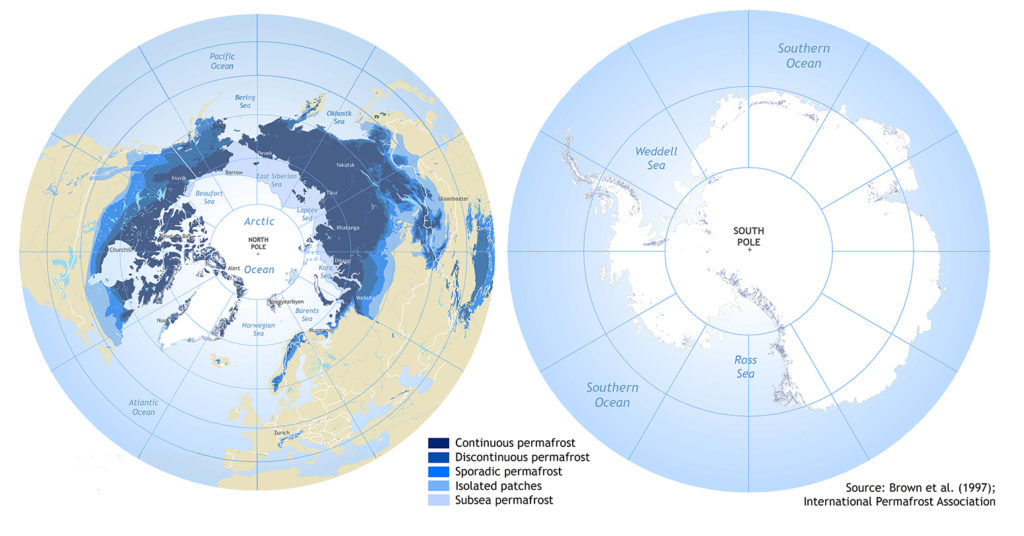
…click on the above link to read the rest of the article…
What is Low-Carbon Living?
WHAT IS LOW-CARBON LIVING?
It’s re-imagining our lives to be more resilient, more abundant and more luxurious, while also being gentler on the Earth. Sound impossible? It’s not! My little family of four utilizes appropriate technology to lower our homestead’s carbon footprint, and it makes us happier, healthier and better connected to our community. Check out what we’re doing to learn how.

The Truth About: Carbon Footprint Calculators
A carbon footprint is a best guess about how much greenhouse gas my actions (and those taken on my behalf) cause to be put into the atmosphere. It’s an attempt to measure the harm I do, understand it and then reduce it by making different choices. If you’re wondering whether it matters, I recommend reading The Uninhabitable Earth. (If you can’t find it through your local library, that’s an affiliate link. My commission doesn’t raise your price and supports The Cool Effect.)
All carbon footprint calculations are incomplete because the economy is complex. A gallon of gas burned in your car directly emits CO2 and other greenhouse gasses (usually measured in CO2 equivalent). The equipment that mines petroleum also gives off pollution, as does the equipment that refines and transports it, and the equipment that makes that equipment. Add this in and the total emissions from a gallon of gas rise by a third to 27.6 lbs.
What about the emissions that occur when the road between the oilfield and the refinery is repaved? Are they divided between the footprints of all humans who drive that road, or all humans who consume the products that travel on it?
…click on the above link to read the rest of the article…
Empty Gestures on Climate Change
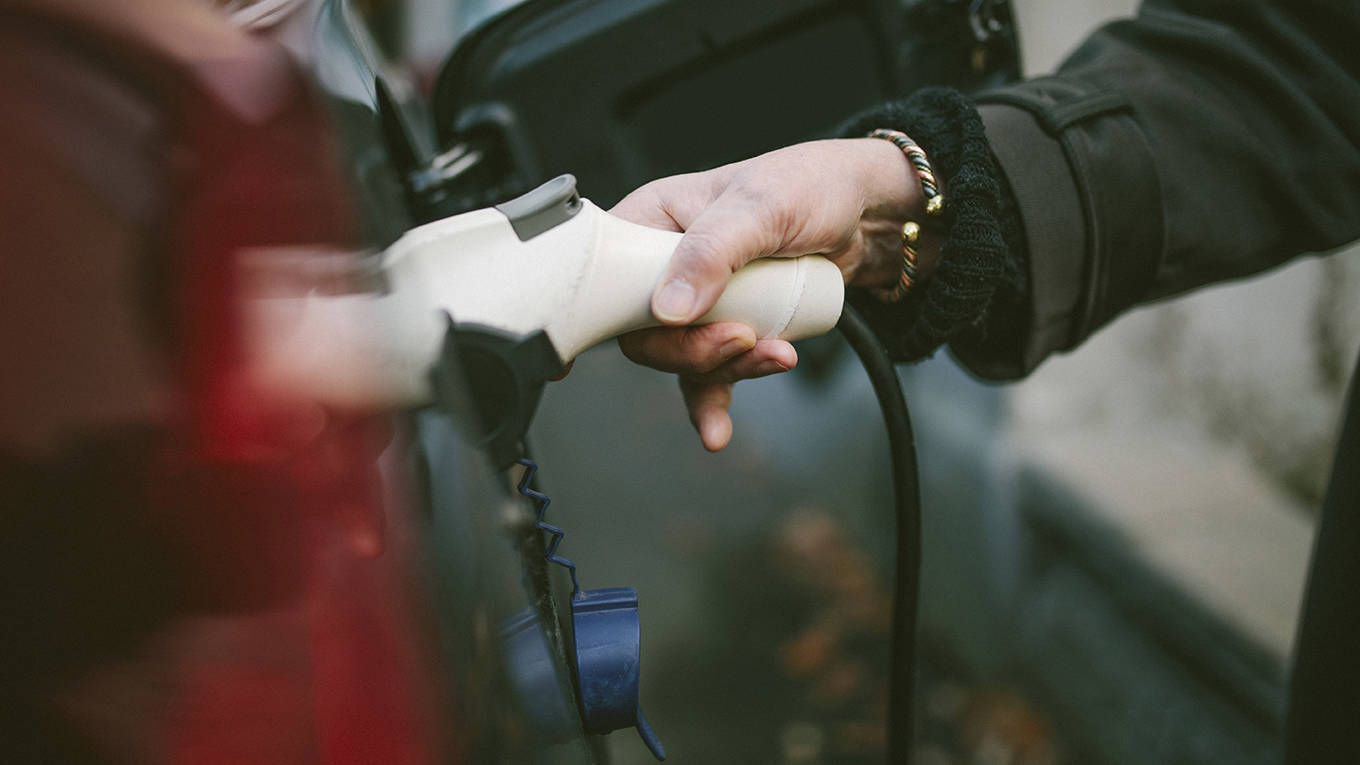
Empty Gestures on Climate Change
When climate campaigners urge people to change their everyday behavior, they trivialize the challenge of global warming. The one individual action that citizens could take that would make a real difference would be to demand a vast increase in spending on green-energy research and development.
MALMÖ – Switch to energy-efficient light bulbs, wash your clothes in cold water, eat less meat, recycle more, and buy an electric car: we are being bombarded with instructions from climate campaigners, environmentalists, and the media about the everyday steps we all must take to tackle climate change. Unfortunately, these appeals trivialize the challenge of global warming, and divert our attention from the huge technological and policy changes that are needed to combat it.1
For example, the British nature-documentary presenter and environmental campaigner David Attenborough was once asked what he as an individual would do to fight climate change. He promised to unplug his phone charger when it was not in use.
Attenborough’s heart is no doubt in the right place. But even if he consistently unplugs his charger for a year, the resulting reduction in carbon-dioxide emissions will be equivalent to less than one-half of one-thousandth of the average person’s annual CO2 emissions in the United Kingdom. Moreover, charging accounts for less than 1% of a phone’s energy needs; the other 99% is required to manufacture the handset and operate data centers and cell towers. Almost everywhere, these processes are heavily reliant on fossil fuels.
Attenborough is far from alone in believing that small gestures can have a meaningful impact on the climate. In fact, even much larger-sounding commitments deliver only limited reductions in CO2 emissions. For example, environmental activists emphasize the need to give up eating meat and driving fossil-fuel-powered cars. But, although I am a vegetarian and do not own a car, I believe we need to be honest about what such choices can achieve.
…click on the above link to read the rest of the article…
In “Historic” Ruling, Dutch Supreme Court Says Government Must Reduce Greenhouse Gas Emissions By 25%
In “Historic” Ruling, Dutch Supreme Court Says Government Must Reduce Greenhouse Gas Emissions By 25%
In a move that has “put the rest of the world on notice,” the Dutch Supreme Court has upheld a landmark climate change ruling that requires the Dutch government to accelerate cuts of carbon emissions.
It was called an “immense victory for climate justice,” according to AP.
The Supreme Court upheld lower court rulings that the severity of the climate change crisis demanded greenhouse gas reductions of at least 25% by 2020, according to the Guardian. This is higher than the 17% drop in emissions that was planned by Mark Rutte’s liberal administration.
The ruling was greeted with cheers in the courtroom an will act as a tailwind for similar cases worldwide. Similar cases are being planned in places like Norway, New Zealand, Uganda and the UK.
Marjan Minnesma of the Dutch Urgenda Foundation said: “I am extremely happy that the highest court in the Netherlands has confirmed that climate change is a real, severe problem and that government should do what they themselves have declared for more than 10 years is necessary, namely between 25% and 40% reduction of CO2.”
Jesse Klaver, the leader of the Dutch Greens, said of the original ruling that it was “historic news” and said “Governments can no longer make promises they don’t fulfil. Countries have an obligation to protect their citizens against climate change. That makes this trial relevant for all other countries.”
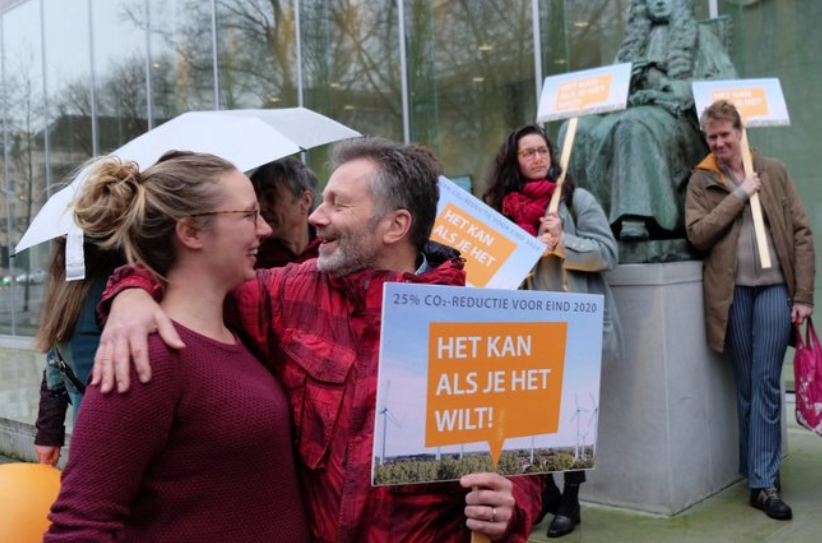
To comply with the ruling, one new coal plan would have to be shut down. The state had argued that the judges were “sidelining democracy” by trying to force the policy change.
But Judge Tan de Sonnaville was unconvinced, ruling: “Climate change is a grave danger. Any postponement of emissions reductions exacerbates the risks of climate change. The Dutch government cannot hide behind other countries’ emissions. It has an independent duty to reduce emissions from its own territory.”
…click on the above link to read the rest of the article…
Our climate is like reckless banking before the crash—it’s time to talk about near-term collapse
Our climate is like reckless banking before the crash—it’s time to talk about near-term collapse
Our food, finance, and logistics systems are worryingly vulnerable to climate shocks, Aled Jones and Will Steffen write. These are not distant existential issues raised by uncertain and abstract models of future climatic risk. They are urgent questions that humanity has been ducking for decades, but now demand urgent answers.
*****

After a quarter of a century of nations from around the world coming together to discuss progress in dealing with climate change, emissions are still rising. The 25th annual United Nations climate change summit is now underway—and for the sake of the planet, it’s high time it changed its approach.
While climate scientists, policymakers and environmental campaigners have been engaged in a decades-long conversation about the future of the planet, most people on planet Earth see no climate emergency. Put bluntly, the science of global warming has failed spectacularly to emotionally connect with much of society, particularly those in the most powerful positions—rendering policy makers ineffective despite repeated warnings.
The science and the warnings focus on curtailing the emission of heat-absorbing gases into the atmosphere that, left unaddressed, may threaten the viability of contemporary society and worsen a mass extinction event already in motion.
But these warnings are not connected with complex human systems, such as food, finance and logistics, leaving them to evolve as if climate change didn’t exist. Terms such as “tipping points” are on their own technical, distant and abstract, while humans are wired to prioritise the short-term.
This failure to connect the dots means humanity has rapidly entered uncharted territory, pumping out carbon ten times faster than at any point since the extinction of the dinosaurs.
…click on the above link to read the rest of the article…
Trudeau will fuel the fires of our climate crisis if he approves Canada’s mega mine
Trudeau will fuel the fires of our climate crisis if he approves Canada’s mega mine
Alberta’s oil sands produce one of the dirtiest oils on the planet. If the Teck mega mine is approved, the damage to our planet will be colossal
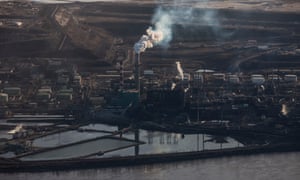
This week, the Canadian government is in Madrid telling the world that climate action is its No 1 priority. When they get home, Justin Trudeau’s newly re-elected government will decide whether to throw more fuel on the fires of climate change by giving the go-ahead to construction of the largest open-pit oil sands mine in Canadian history.
Approving Teck Resources’ Frontier mine would effectively signal Canada’s abandonment of its international climate goals. The mega mine would operate until 2067, adding a whopping 6 megatonnes of climate pollution every year. That’s on top of the increasing amount of carbon that Canada’s petroleum producers are already pumping out every year.
The Teck mega mine would be on Dene and Cree territory, close to Indigenous communities. The area is home to one of the last free-roaming herds of wood bison, it’s along the migration route for the only wild population of endangered whooping cranes, and is just 30km from the boundary of Wood Buffalo national park – a Unesco world heritage site because of its cultural importance and biodiversity.Advertisement
Alberta’s oil sands produce one of the dirtiest oils on the planet, and they are the fastest-growing source of carbon emissions in Canada. The industry is expanding rapidly and is already responsible for more carbon pollution than all of Quebec. Oil and gas is now the largest climate polluter in the country, exceeding all greenhouse gases from transportation.
…click on the above link to read the rest of the article…
Carbon capture could require 25% of all global energy
Carbon capture could require 25% of all global energy
Preface. This is clearly a pipedream. Surely the authors know this, since they say that the energy needed to run direct air capture machines in 2100 is up to 300 exajoules each year. That’s more than half of global energy consumption today. It’s equivalent to the current annual energy demand of China, the US, the EU and Japan combined. It is equal to the global supply of energy from coal and gas in 2018.
That’s a showstopper. This CO2 chomper isn’t going anywhere. It simply requires too much energy, raw materials, and an astounding, impossibly large-scale rapid deployment of 30% a year to be of any use.
Reaching 30 Gt CO2/yr of CO2 capture – a similar scale to current global emissions – would mean building some 30,000 large-scale DAC factories. For comparison, there are fewer than 10,000 coal-fired power stations in the world today.
The cement and steel used in DACCS facilities would require a great deal of energy and CO2 emissions that need to be subtracted from whatever is sequestered.
Nor can the CO2 be stored in carbon capture sorbents – these are between the research and demonstration levels, far from being commercial, and are subject to degradation which would lead to high operational and maintenance costs. Their manufacture also releases chemical pollutants that need to be managed, adding to the energy used even more. Plus sorbents can require a great deal of high heat and fossil fuel inputs, possibly pushing up the “quarter of global energy” beyond that.
As far as I can tell the idea of sorbents, which are far from being commercial and very expensive to produce, is only being proposed because there’s not enough geological storage to put CO2.
…click on the above link to read the rest of the article…
Volatility in Weather is Spot On! Are Pole Shifts Part of the Process?
Volatility in Weather is Spot On! Are Pole Shifts Part of the Process?
QUESTION: What proof do you have that there is higher volatility in weather? I think you just make this up. I have not seen anywhere else with claims of new high and low records. Humans are responsible for climate change. You are spreading propaganda yourself.
JG
ANSWER: Well here is the list published by the NOAA that shows there have been 17,082 new record daily highs and 17.068 new record lows. If this is what you believe, then stop heating your home in the winter or using air conditioning. Quit your job, stay home. Do not use any public transportation. Grow your own food because even buying a head of lettuce means a truck has to deliver it to the store. You better not read a newspaper, for you are continuing to cutting down trees that suck up CO2. Then again, turn off your computer because even reading this consumes electricity and you are destroying the planet every second, according to your theory.
Do all that and if you are still alive after one year, then let me know how you survived.
For the rest of us who are objective, the VOLATILITY our computer has been forecasting is precisely on target. We have just over 17,000 new record highs and over 17,000 new record lows. That is what we call VOLATILITY in market-terms.
What is difficult to forecast short-term is the polar shifts. The magnetic North Pole is wandering about 34 miles (55 kilometers) a year. The North Magnetic Pole has moved so much, so fast, that a group of scientists rushed to change a model that helps guide shipping, airplanes, and submarines to know where they are in the Arctic Ocean.
…click on the above link to read the rest of the article…
Morgan Stanley: “Climate Will Be A Key Driver Of Asset Prices In The Months And Years Ahead”
Morgan Stanley: “Climate Will Be A Key Driver Of Asset Prices In The Months And Years Ahead”
“Sunday Start”, authored by Morgan Stanley equity strategist, Jessica Alsford
In three weeks, the world’s leaders will begin to gather in Madrid for the 25th United Nations Climate Change Conference. The intensity of the global climate strikes this year suggests that the proceedings will be scrutinized as never before. But the decisions made, or not made, will also have repercussions for global markets.
We’re transitioning towards a lower carbon economy, albeit at a slower pace than needed to stay within a two degrees Celsius climate scenario (2DS). For companies that can build offshore wind installations, develop electric vehicles and manufacture renewable diesels, we see potential for material earnings growth. In Decarbonisation: The Race to Net Zero, we estimated that more than US$50 trillion of capital will need to be deployed into renewables, EVs, hydrogen, biofuels and carbon capture and storage over the next 30 years, putting US$3-10 trillion of EBIT up for grabs.
Decarbonising electricity is the largest opportunity to reduce carbon emissions, with the power sector responsible for a quarter of global emissions. Strong renewables growth should be achievable given the significant improvements we’ve seen in solar and wind economics. But costs continue to constrain many other clean technologies, including battery storage, green hydrogen, CCS and biofuels.
If governments are serious about halting climate change, some form of stimulus will be needed.
Subsidies have already been key in industries like renewables. In the US, federal subsidies have helped to drive the transition to renewable energy, which rose from 14% of total power generation capacity in 2000 to 24% in 2018.
…click on the above link to read the rest of the article…




